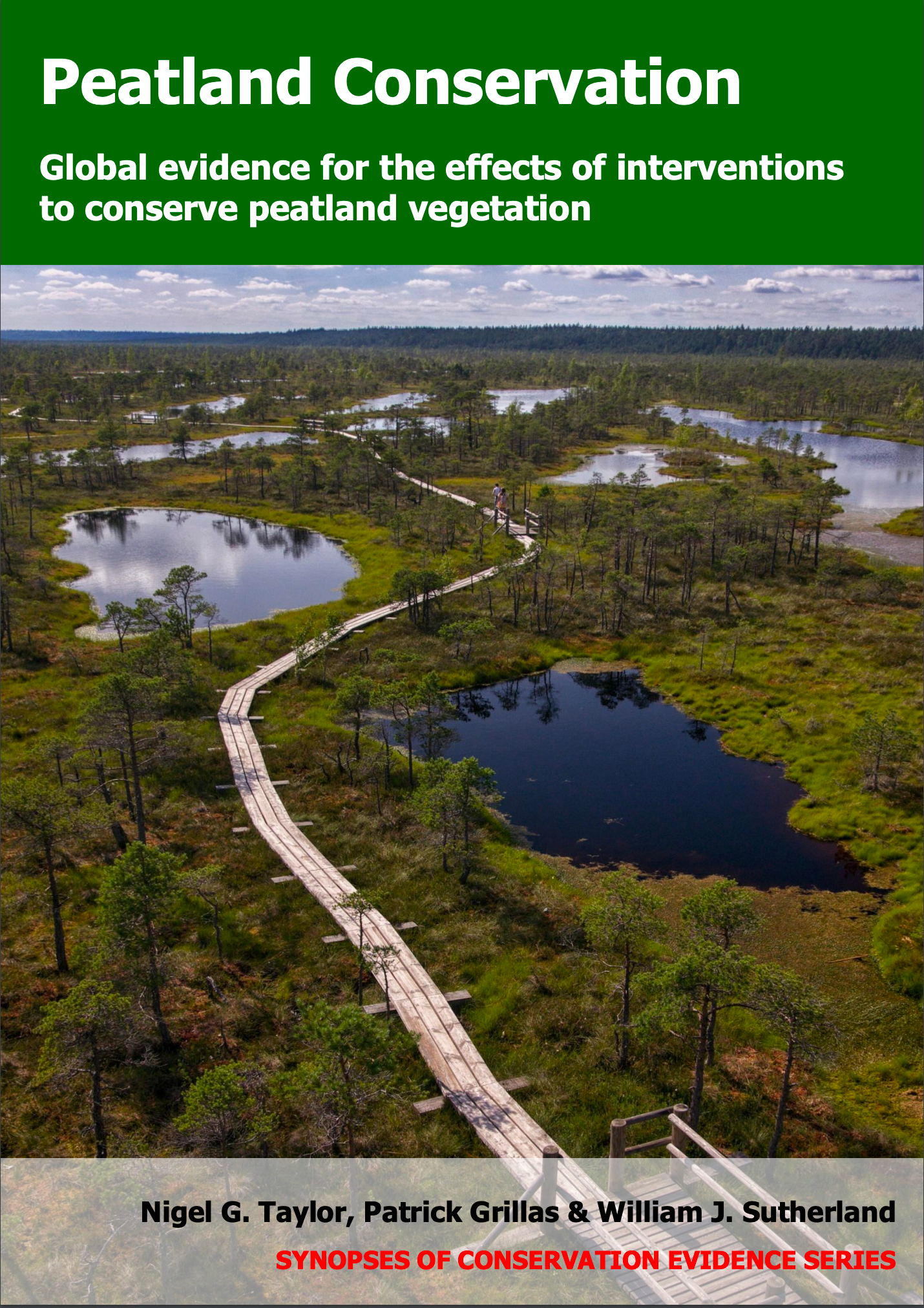Introduce seeds of peatland trees/shrubs
-
Overall effectiveness category Likely to be beneficial
-
Number of studies: 5
View assessment score
Hide assessment score
How is the evidence assessed?
-
Effectiveness
45% -
Certainty
40% -
Harms
5%
Study locations
Supporting evidence from individual studies
A replicated, controlled, before-and-after study in 1993–1995 in a historically mined raised bog in Germany (Sliva & Pfadenhauer 1999) reported that planted heather Calluna vulgaris seeds germinated, and that some seedlings survived over two years – although survival depended on whether plots were covered. In covered plots, there were 6–24 seedlings/400 cm2 after one year and 25–35 seedlings/400 cm2 after two years. There were significantly fewer seedlings in uncovered plots: 5 seedlings/400 cm2 after one year and 0–1 seedlings/400 cm2 after two years. Unseeded plots contained no heather seedlings, whether covered or not. In autumn 1993, twenty 1 m2 plots of bare rewetted peat were sown with heather seeds (40–48 seeds/400 cm2). Five plots were then covered with mulch, five with synthetic fleece and five with jute fibre mat for one or two winters, whilst five were not covered. Fifteen additional plots were not sown (but some were covered). Seedlings were counted in summer 1994 (two plots/treatment) and 1995 (three plots/treatment).
Study and other actions testedA replicated study in 1992 in a historically mined fen in Colorado, USA (Cooper & MacDonald 2000) reported that planted hoary willow Salix candida seeds germinated in 6 of 25 plots, but that all seedlings died within one month. In June 1992, twenty fresh ripe seeds were planted into each of 25 plots (0.5 x 0.5 m, with a “few” centimetres of surface peat and variable water levels). All plots had been cleared of existing vegetation. Seeds were watered after planting. Seedling germination and survival were recorded weekly until the end of August 1992.
Study and other actions testedA replicated, randomized, paired, controlled, before-and-after study in 1998–2000 in a historically mined raised bog in New Zealand (Schipper et al. 2002) reported that plots seeded with manuka Leptospermum scoparium typically contained fewer plant species than unseeded plots after 810 days, but had greater vegetation cover. Most of these results are not based on tests of statistical significance. Seeded plots contained fewer plant species in 9 of 12 comparisons (seeded: 1–6 species; unseeded: 3–8 species). In the other three comparisons, seeded plots contained more species. Accordingly, seeded plots were dominated by dense stands of manuka, with more manuka cover than unseeded plots in 11 of 12 comparisons (seeded: 5–100%; unseeded 0–92%). Total vegetation cover increased in both seeded and unseeded plots, but was significantly higher after 810 days in the former (seeded: 52%; unseeded: 40%). In March 1998, forty-eight plots (25 m2) were established, in six blocks, on bare rewetted peat. Manuka branches were placed on twenty-four plots (four random plots/block). The branches released seeds as they dried. Twenty-four control plots received no seeds/branches. Some plots were fertilized. Canopy cover of every plant species was estimated every 1–3 months until June 2000.
Study and other actions testedA site comparison study in two historically mined raised bogs in Estonia (Triisberg et al. 2011) reported that a bog sown with cranberry Oxycoccus palustris seeds (and fertilized) contained a different plant community to an unsown (and unfertilized) bog, with more plant species, more moss/lichen cover and more heather cover but similar total vegetation and cranberry cover. Most of these results are not based on tests of statistical significance. After 25 years, the overall plant community composition significantly differed between the sown and unsown bogs (data not reported). The sown bog contained more plant species in two of three comparisons (sown: 13–16; unsown: 7–15), greater moss/lichen cover in three of three comparisons (sown: 14–42%; unsown: 3–11%), greater Sphagnum moss cover in eight of nine comparisons (sown: <1–8%; unsown: 0–2%) and greater cover of heather Calluna vulgaris in three of three comparisons (sown: 1–28%; unsown: <1–17%). However, the bogs had similar total vegetation cover in two of three comparisons (sown: 42–46%; unsown: 41–48%) and cranberry cover in three of three comparisons (sown: <1–3%; unsown: 0–1%). In the late 1980s, one historically mined bog was sown with cranberry seeds (20 kg/ha) and fertilized (phosphate; 350 kg/ha). The study does not distinguish between the effects of these interventions. Another historically mined bog was neither sown nor fertilized. In the early 2000s, vegetation cover was assessed in 235 quadrats (1 m2) across the bogs: placed in ditches, along ditch margins and on flat peat.
Study and other actions testedA replicated, randomized, paired, controlled study in 2009–2011 in a fen in Michigan, USA (Bess et al. 2014) found that plots sown with shrub (and herb) seeds developed more vegetation cover overall than unsown plots, but similar cover of all monitored plant groups and similar species richness. After two years, sown plots had greater total vegetation cover (214%) than unsown plots (165%). Cover of individual plant groups did not differ significantly between sown and unsown plots (although it tended to be higher in the former): shrubs (4 vs 4%), sedges (120 vs 81%), grasses (27 vs 15%), forbs (28 vs 33%), bryophytes (33 vs 29%). The same was true for plant species richness (45 vs 43 species across all quadrats). Patterns were similar, but cover lower, one year after intervention. In 2009, twenty pairs of 9 m2 plots were established, in a ditch recently refilled with seed-rich fen spoil. Twenty plots (one random plot/pair) were sown with a mixture of shrub and herb seeds. The other 20 plots were not sown. The study does not distinguish between the effects of sowing shrubs and herbs. In 2010 and 2011, vegetation cover was recorded in one 1 m2 quadrat/plot.
Study and other actions tested
Where has this evidence come from?
List of journals searched by synopsis
All the journals searched for all synopses
This Action forms part of the Action Synopsis:
Peatland Conservation
Peatland Conservation - Published 2018
Peatland Conservation





)_2023.JPG)














